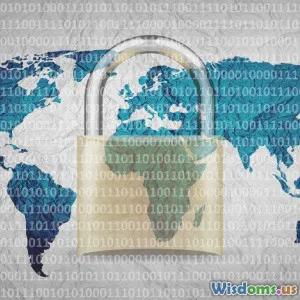
Why Do Global Elites Flock to the Bilderberg Group Each Year
8 min read Explore why global elites convene annually at the Bilderberg Group, revealing the secrets behind this influential, exclusive summit. (0 Reviews)
Why Do Global Elites Flock to the Bilderberg Group Each Year?
The Bilderberg Group, often shrouded in mystery and speculation, is one of the most secretive and elite gatherings on the global stage. Since its inception in 1954, it has annually convened influential politicians, business magnates, academics, and media figures in exclusive off-the-record meetings. But why do these global elites keep coming back year after year? What is the allure of this clandestine lodge, and why does it spark curiosity and conspiracy theories alike?
In this article, we peel back the layers of secrecy to understand the unique role the Bilderberg Group plays in shaping global discourse and why it continues to attract society’s most powerful minds.
The Origins and Legacy of the Bilderberg Group
Founded in 1954 by Prince Bernhard of the Netherlands, the Bilderberg Group initially aimed to foster better understanding and closer cooperation between Europe and North America during the Cold War. The seminal idea was to create an informal forum where policymakers and industry leaders could discuss challenges facing the Western world candidly, away from the pressures of public scrutiny.
Held at the Hotel de Bilderberg in the Netherlands (from which it derives its name), the meeting was grounded on principles of privacy and discretion. Attendees participate with the Chatham House Rule, meaning they can use the information gleaned but cannot disclose the identities or affiliations of speakers.
The legacy of the Bilderberg Group is a blend of bridging transatlantic divides and influencing economic and geopolitical strategies behind closed doors.
Exclusive Anonymity: The Magnetic Draw of Privacy
One key reason elite figures attend Bilderberg is its unique setting that combines exclusivity with absolute confidentiality. This environment fosters frank, honest conversations without the risk of media exposure or political fallout.
For example, Jens Stoltenberg, Secretary-General of NATO and a former attendee, has highlighted that the forum allows free-flowing dialogue on topics too sensitive for public discussion. This secures an environment where controversial or innovative ideas can be debated openly.
Such privacy is rare in today's hyper-connected world, making Bilderberg an invaluable venue for candid discourse.
Power Networking: Concentrated Influence in a Single Room
Every year, 120 to 150 carefully selected participants converge. The mix includes heads of state, central bankers, CEOs of major corporations, leading academics, and journalists. This rare congregation creates unparalleled opportunities for networking, alliance-building, and information exchange among key decision-makers.
Take, for instance, the presence of tech giants like Eric Schmidt (former CEO of Google) alongside political leaders. Their interactions may shape policies on digital governance or cybersecurity that have lasting implications.
The tight-knit and cross-disciplinary nature of the group accelerates consensus-building and strategizing on global issues from climate change to economic reforms.
Informal Diplomacy Beyond Bureaucracy
Beyond official summits and diplomatic channels, Bilderberg meetings serve as a back channel to resolve or discuss pressing international concerns. The informality strips away rigid diplomacy protocols, allowing for more genuine interpersonal interactions.
The 2010 meetings reportedly included intense discussions about the Eurozone crisis, illustrating how global financial topics are tackled ahead of public policy formulation.
In some ways, Bilderberg acts as a think tank influencing policy networks, without the procedural constraints that national legislatures or international bodies face.
Innovations, Trends, and Future Crises
Because many attendees are futurists and visionaries within their fields, Bilderberg is a launchpad for anticipating future global trends and challenges. Topics such as artificial intelligence, energy transitions, demographic shifts, and geopolitical tensions surface during sessions.
Journalist Annie Machon noted that the group acts as an incubator for forward-thinking policies and frameworks before they enter the public eye. Consequently, this early strategizing capability is a strong incentive for continued participation.
The Veil of Secrecy: Fueling Speculation and Power Myths
The group's insistence on secrecy, lack of public minutes, and private guest lists have sparked decades of conspiracy theories—from unfounded accusations of world government plots to secret economic manipulation.
While many claims lack evidence, the opacity undeniably enhances the group's mystique, reinforcing the elitist aura surrounding it.
Interestingly, the Bilderberg Group occasionally publishes participant lists and broad agenda themes, indicating a willingness to balance secrecy and transparency.
Conclusion: Why Bilderberg Continues to Captivate and Influence
The Bilderberg Group’s blend of exclusivity, confidentiality, and high-caliber participation creates a potent environment for informal global governance dialogues. For elites operating within political, economic, and intellectual spheres, it represents an unparalleled platform for candid debate, networking, and strategic foresight.
In a rapidly changing world riddled with complex challenges, having a trusted sanctuary where the most influential minds can exchange ideas freely is invaluable. Moreover, the group's ability to shape emerging global policy frameworks behind closed doors explains its enduring appeal.
Understanding the Bilderberg phenomenon gives us insight not just into elite networking but also the subtle architectures behind international decision-making. Far from nefarious conspiracies, it reveals a pragmatic approach to problem-solving and leadership in an interconnected world.
As we watch global trends unfold, the annual Bilderberg meetings remain a clandestine window into the future and the hidden dialogues that quietly guide our collective destiny.
References:
- David Rockefeller, "Memoirs" (2002)
- Annie Machon, investigative journalist commentary on Bilderberg (2019)
- Publicly available attendee lists and agenda summaries from Bilderberg Meetings official website
- Jens Stoltenberg speeches and NATO briefings
Rate the Post
User Reviews
Other posts in Leadership & Influence
Popular Posts















